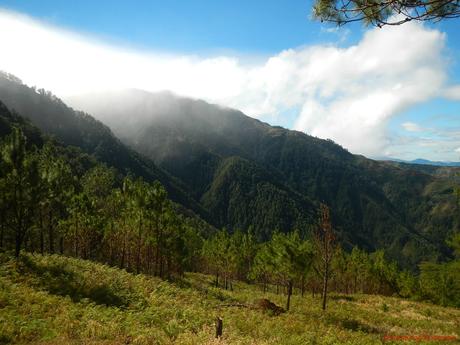
At 2,922 meters above sea level, Mt. Pulag is Luzon’s highest mountain and the third highest mountain in the Philippines. It is the sacred home of the Ibalois, Ifugaos, Kalanguya, Kankana-eys, and Karao tribes. It is the home of hundreds of plant species, rare birds, and threatened mammals such as the Philippine Deer, Long Haired Fruit Bat, and more. It is a massive mountain that demands equally massive respect.
Unfortunately, I didn’t heed that respect. And I paid dearly for that.
We woke up very early at around 3AM. Although it was quite chilly, the surrounding mountains shielded us from the brunt of the cold mountain air.
After consuming a light but cold breakfast which we cooked the night before, we broke camp, packed out, and got ready for the main event, a really grueling and sustained 10 to 11-hour ascent up Mt. Pulag.
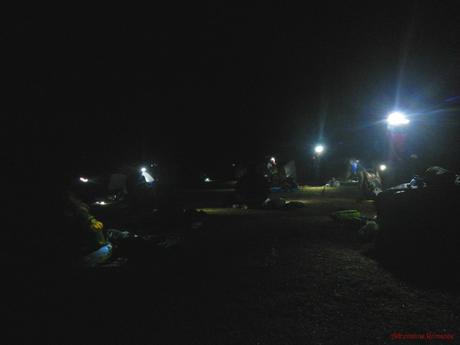
The start of the steep ascent starts at the foot of the Eddet River. We started climbing up carefully, since we know that at the right side of the trail is a steep drop-off.
An hour through the climb, I started to feel a dull throb in my thighs. At first, it was manageable; after all, it was a very steep ascent in cold weather. I figured out that after a few minutes of rest, a few pinches of salt, and a sip of Gatorade would do the trick. Boy, I was dead wrong!
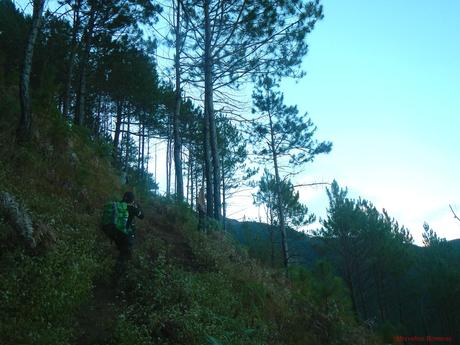
Check out the photo below so you will have an idea of just how steep this slope is.
At this point, despite resting and consuming ionic drinks, the pain in my thighs rapidly became more severe until they became full-fledged leg cramps. It was so painful that I can hardly walk and bend my legs. The pain was so agonizing; it was like my legs were being shot at each step.
Survival training kicked in. I told climbers who overtook me to inform my team about my condition and to wait for me at the next rest station.
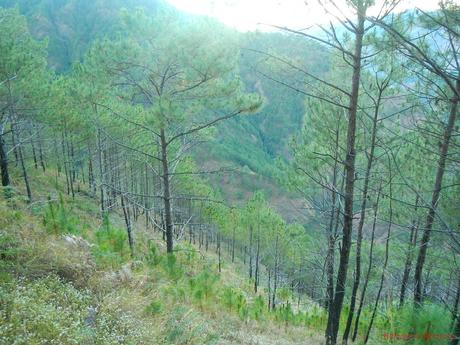
After half an hour of painful climbing—there were even times when I had to crawl—I reached the team at the rest station. Finally, I received first aid, a leg massage, and a dose of Vitamin B, which started to ease off the extreme pain.
But even with all the medical ministrations, I became woefully aware that the cramp could come back anytime. In other words, I became a liability to the group.
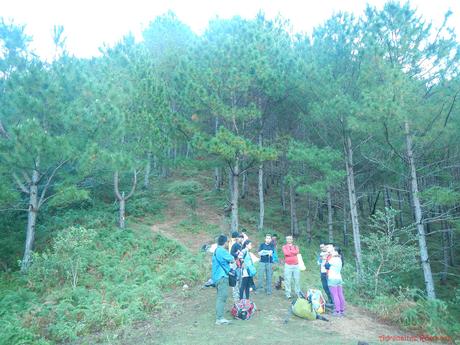
After resting, we continued our ascent deep inside the Benguet pine forest. Those trees have stood there for hundreds of years. It’s a good thing that Mt. Pulag is a protected area else all these beautiful trees would have disappeared. The mountain was declared as a National Park in 1964 through Proclamation No. 56.
Walking uphill was still painful, and I had to walk at a turtle’s pace. After awhile, I found the culprit of my cramps: me. I realized that I didn’t accumulate enough practice climbs to undertake the Akiki trail. I was overconfident and believed that our climb up Mt. Hambubuyog was enough to condition my legs.
In other words, I paid dearly for my lack of respect to the mountains.
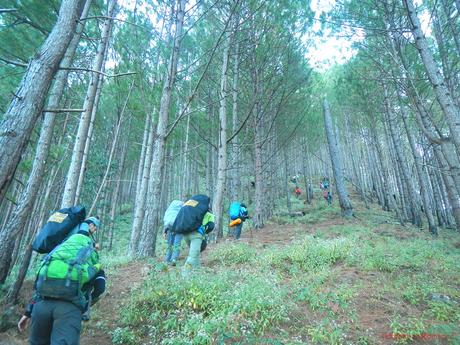
Can you see me resting? The photo below has a poignant message; I am insignificant against the majesty, power, and awesomeness of Mother Nature. She is indifferent and merciless, and she could end my life if she wants to.
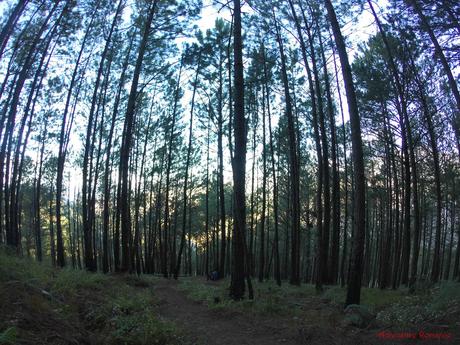
But amidst this potentially dangerous mishap, there is still one loving person who is always ready to stand by me, take my hand, help me on my feet, and lead me up any hurdle one step at a time. That person is, of course, my Sweetie. Happy Valentines, Sweetie!
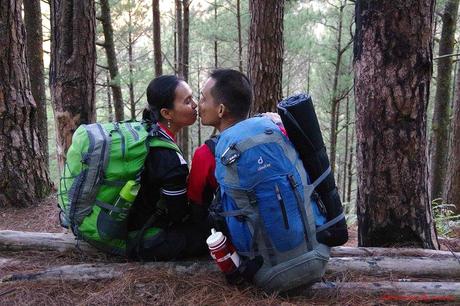
(Photo credit: Jigz Santiago)
At times, we came upon felled trees like this. Don’t worry. That tree wasn’t cut by a logger’s axe or saw—see the ragged stump? A strong wind probably caused it to topple down.
Check out the trail; originally, it was supposed to go straight up the slope. But with the tree blocking the trail (of course, you can crawl under it), we need to go around it. More torture for my badly cramping legs.
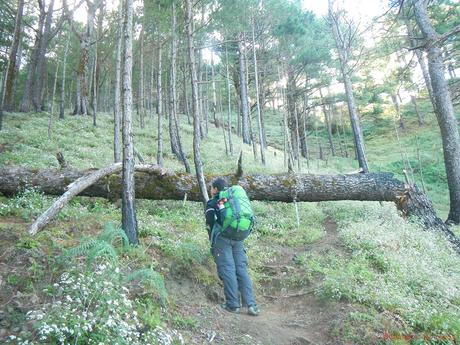
But despite the maddening throb, it was still an extremely enjoyable climb. As the morning sun rose higher, colors became more vivid. Picturesque scenes like that in the photo below became natural painkillers.
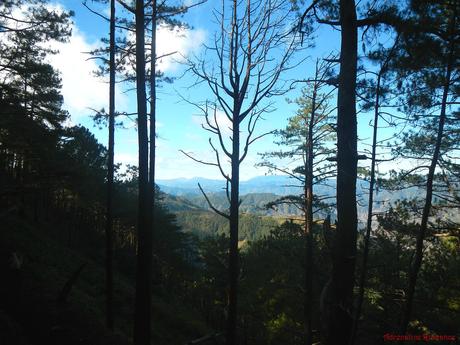
One of the most amazing sights we’ve seen is this gorgeous rainbow. Normally, we see rainbows while we are in the lowlands. But this was the first time that we saw a rainbow this close and at a high altitude. In fact, the colorful bow seemed so near that we were tempted to touch it.
Now, should we go down so we could find its end and retrieve a pot of gold? Hehehe!
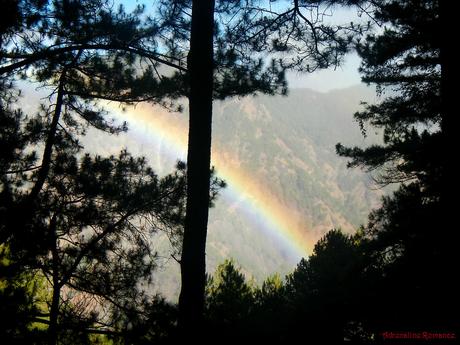
We also came upon this large all-natural field of wild flowers. They look like specks of frosts.
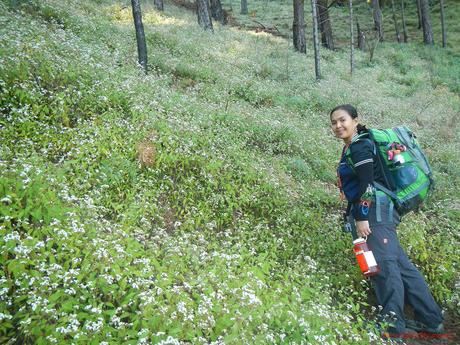
My ascent on this seemingly 70-degree slope, which took several hours, was painfully slow. But with Sweetie’s help, I persevered and never gave up. I took one step at a time, with each step bringing me closer to Mt. Pulag’s sacred summit.
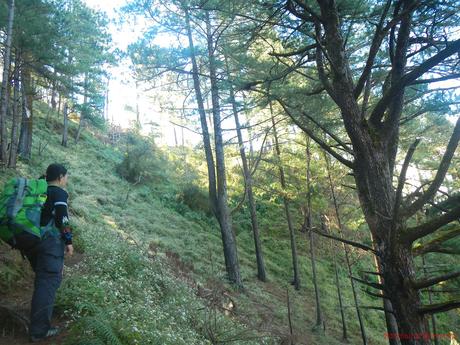
At last, we reached the original Akiki camp site and the rest of our team. I apologized for my “tardiness” and being a liability, but they were very considerate and understanding. When I asked them how long they were waiting for us, I was pleasantly surprised that only less than 15 minutes had passed by. Not bad for someone who was limping all the way up a 70-degree slope.
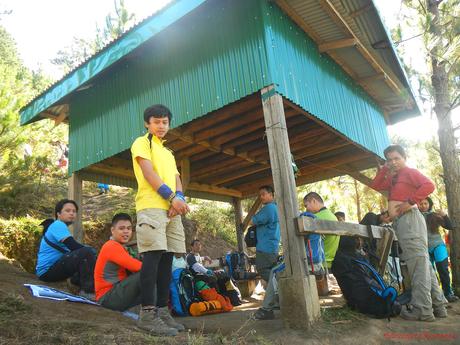
Welcome to Marlboro Country. That’s what climbers call this place. Why the name? You might ask. Well, according to the guides, this pine-covered place looks like a scene from an old Marlboro commercial. We couldn’t recall any Marlboro TV advertisement that features pine forests, but that doesn’t matter. This place is truly magnificent.
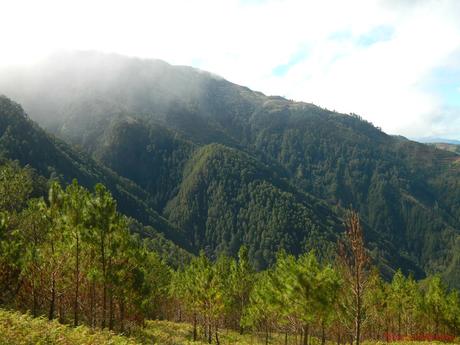
Little by little, the pain abated until I felt it was time to climb again. So, after putting our packs on, we continued climbing on the tree-covered slope. The ascent became less steep, which was a boon for me.
The morning sun, high above the sky, was relentless, but the canopies of the pine trees provided us some shade.
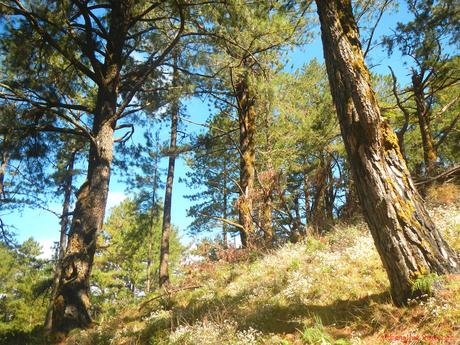
As our ascent continued, pine trees and wild flowers slowly disappeared and made way for ancient montane trees and ferns.
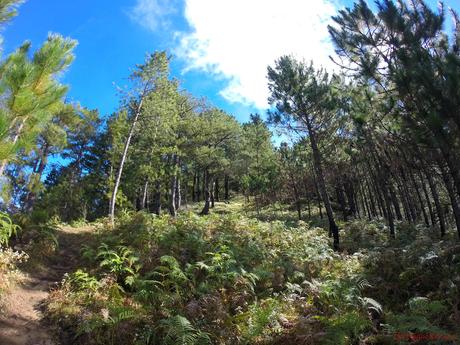
Soft moss grows on many trees here. The moss provides a rich home for grubs, insects, bacteria, and other organisms.
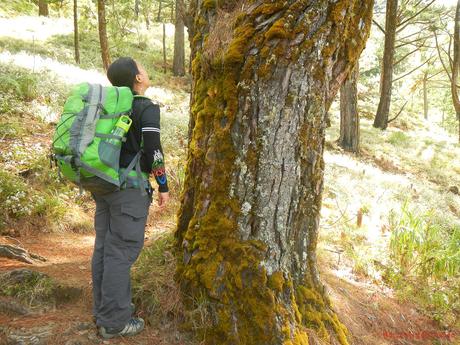
Here’s a different kind of moss. When they die, they fall off the tree and turn red brown. The ground is covered with dead moss, which gives the earth a weird reddish color.
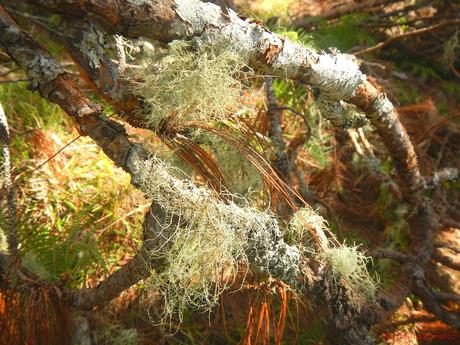
An hour later, we arrived at the entrance of the mossy montane forest. Almost immediately, we felt an abrupt drop of temperature. That’s because the canopies of the old dipterocarp trees are thicker than those of the pine trees, which means more protection from the sun’s heat.

With all these ancient, moss-encrusted trees around us like imposing walls, you may think it is rather disconcerting, considering we were alone and vulnerable in this mighty jungle. That is definitely true, but fortunately, the trail is well marked and unfailingly showed us the way.
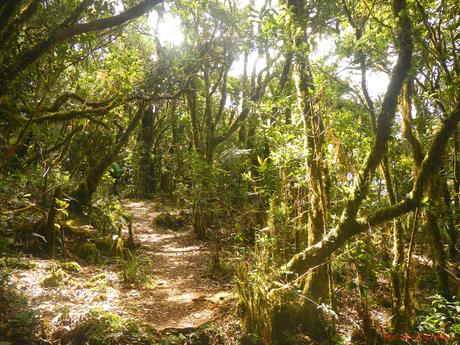
Moss-covered trees, dew-sprinkled wild flowers, pretty orchids, and strange fruit abound in the mossy forest. It is not every day when you can see wild wonders such as these.
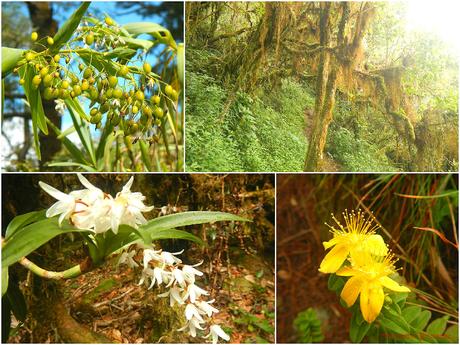
Finally, we reached another clear resting area which harbors the last water source in the Akiki trail. We decided to stop here so we can prepare and eat our lunch. We also filled all our water bottles so we’ll have all the water we need at the saddle camp.
Having lunch here is a solemn experience as we quietly ate our meal while enjoying the beautiful vista far below us.
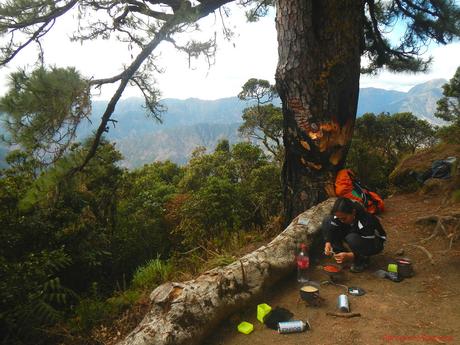
An hour later, it was time to re-enter the mossy forest again. We were quite worried because the clouds started to roll in, and the air became moist. Throughout our mountaineering experience, we knew it meant one thing; it was likely going to rain.

After an hour, we reached a small clearing which is designated as an emergency camping area. I hoped that my cramps won’t necessitate us to camp here. Fortunately, nutrients and salts from my lunch, frequent rests, leg massages, and a slow but steady pace reduced the searing pain to a dull throb.
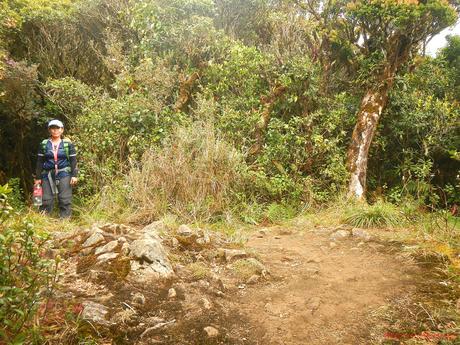
Soon, we came upon a sight that let us breathe a sigh of relief. We were exiting the mossy forest and entering into the grasslands. This also meant, according to the Akiki trail map, that the saddle camp is near.
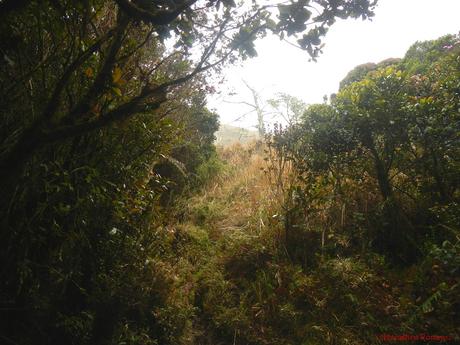
With renowned vigor, we pushed on. Just as we started to exit the forest, we felt the first few drops of rain pelting our skin. At this altitude and temperature, which dropped to less than 20 degrees, getting soaked is a no-no. Climbers, no matter how healthy they are, can succumb to hypothermia.
Although we are in fairly good physical shape, we took no chances. We took out our waterproof ponchos and wore them before proceeding up the first hill of the grasslands.
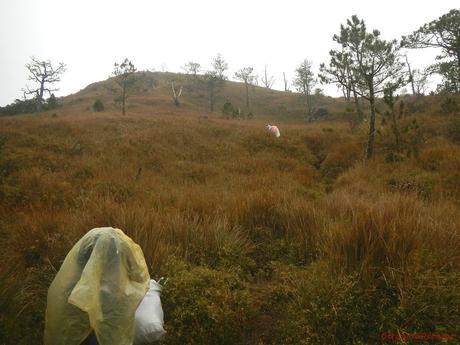
The grasslands are actually made of cogon grass and Mt. Pulag’s endemic dwarf bamboo. It’s pretty amazing knowing that there are bamboos that grew up to only a foot or two; most of the bamboos we see during our treks tower up to several feet.
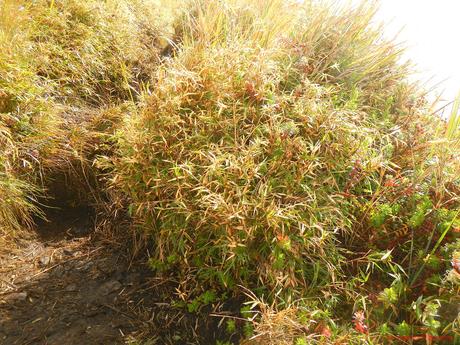
While we rested for a bit, we saw rainclouds actually closing in on us! Our helpful guide, porter, and tailman said that the view from here is extraordinary had it not been covered by these clouds.
See that green mountain below us? That’s the mossy forest where we came from.
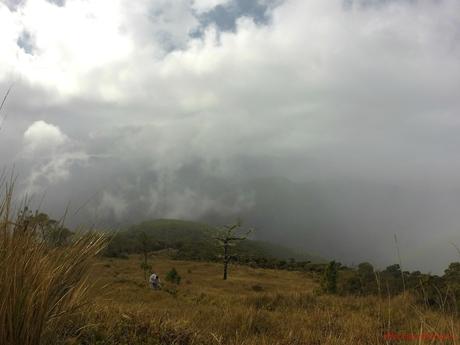
After a little while, we continued climbing several dwarf bamboo-covered hills, hoping the wind would blow the rainclouds in another direction.
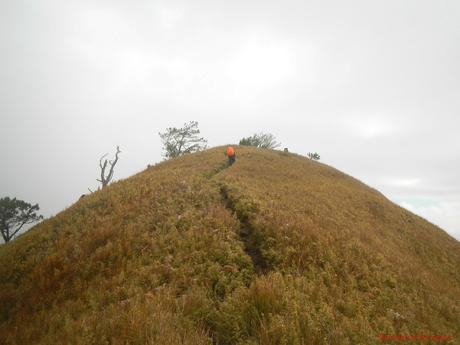
Unfortunately, no such luck. The raincloud overtook our team. Inside the cloud, we experienced gale-force winds that threatened to blow us off the mountain. Worse, the accompanying rain pelted us with furious intensity. Together with the biting cold and strong wind, the hurled raindrops felt like tiny needles hitting our unprotected faces and hands.
In fact, we actually had to stay low so we can streamline our form. Being more aerodynamic helped resist the wind.
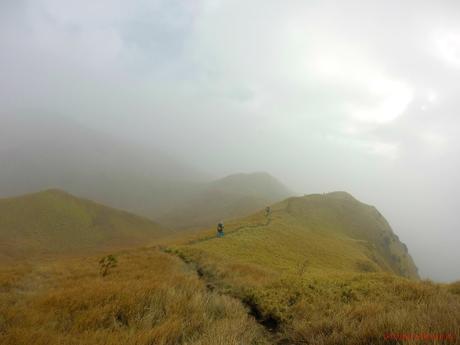
After 45 minutes of braving the cold, wind, and rain in the exposed grasslands, we saw the faint outline of an outhouse through the cloud. We are almost at Camp 3, and our ordeal (and personally, my leg cramps) was almost over.
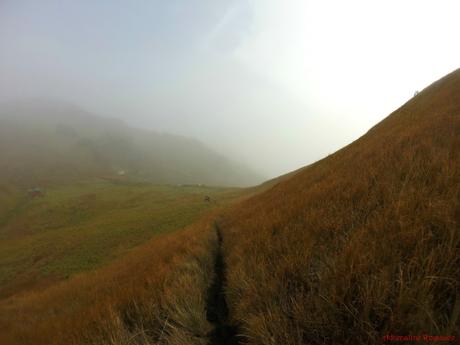
There was a brief moment when the winds died down and the rain stopped pouring. Quickly, we pitched our tents. Since we arrived at Camp 3 earlier than expected, there were only a handful of campers there. This allowed us to choose the best, sweetest, and well-protected spots in the area.
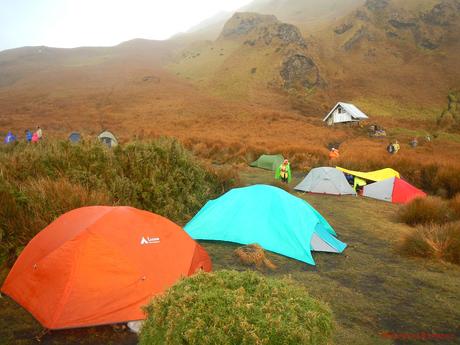
Now that we were safely and comfortably settled in, it was time to relax and explore the campsite. Like all other campsites of Mt. Pulag, Camp 3 has a shelter for porters and guides so they won’t have to bring tents. Sturdier than the best tents, these shelters protect porters and guides from the chill of Mt. Pulag, which is known to dip to sub-freezing temperatures. In fact, when we got here, it was already 12 degrees even though it was still 3PM.
Also, if you look at the photo below, you can see campers descending from the mountain. Those are campers from faraway Camp 2 who had to move to Camp 3 since the camp sites at the Ambangeg trail were already full.
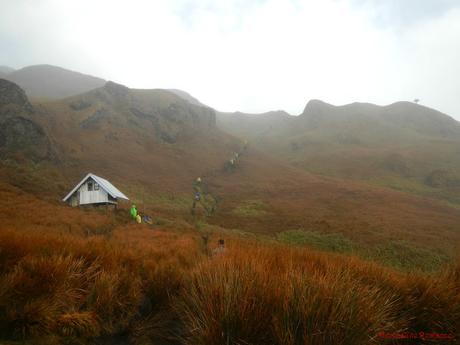
Camp 3 has an outhouse so that climbers who need to heed the call of nature can do their business in relative comfort and convenience.
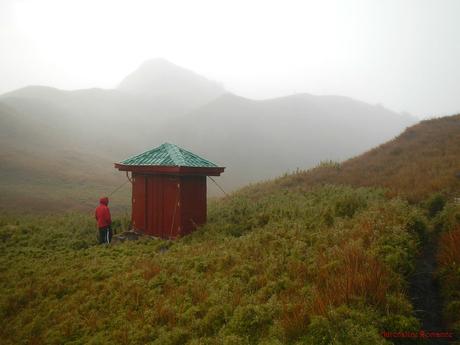
Later that afternoon, the sky cleared up although there was still a heavy wind-blown shower in the area. As the clouds parted, we had a brief glimpse of Mt. Pulag’s majestic summit. From Camp 3, the summit is just a mere 15 minutes away!
Also, check out that amazing landscape in the photo below. Technically, this is called a tussock grassland wherein tussocks, or bunch grasses, cover an expansive field. Although tussocks are more common in temperate regions with low rainfall, they grow abundantly here due to the unique climatic conditions in Mt. Pulag.
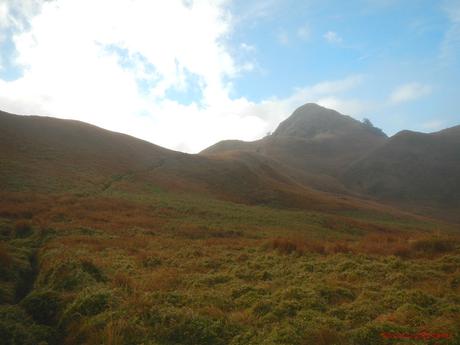
We decided to prepare and eat an early dinner since we planned to wake up at dawn, hike to the summit, and watch the much vaunted Mt. Pulag sunrise and sea-of-clouds phenomenon.
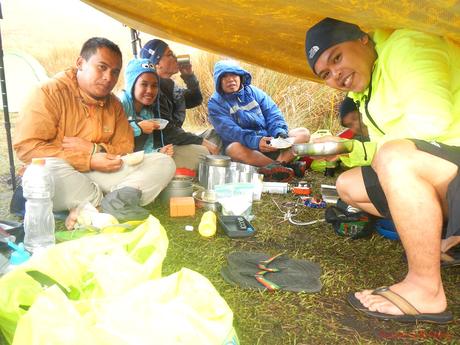
At 5PM, Sweetie and I were ready to cuddle and turn in. This was the earliest we’ve ever slept, and we wondered if we could have our shut-eye this early. Thankfully, the cold temperature, which now dropped to around 8 degrees, lulled us to sleep.
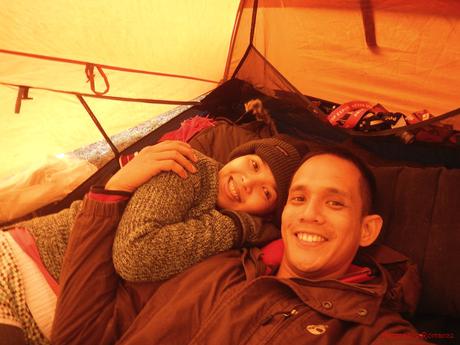
Our second day of climbing the Akiki trail ended without much fanfare due to the worsening weather condition. But for me, it was a moment of triumph. I was able to reach the camp despite my painful ordeal and potentially debilitating injury. I rediscovered the strength in me, and I confirmed that the human spirit is indeed indomitable.
But I also faced the realization that my overconfidence and momentary lack of respect for myself and Mother Nature almost got the better of me. When facing Mother Nature, a person should never let go of that reverence as it decides whether one would live or perish in her bosom.
Tips to follow

